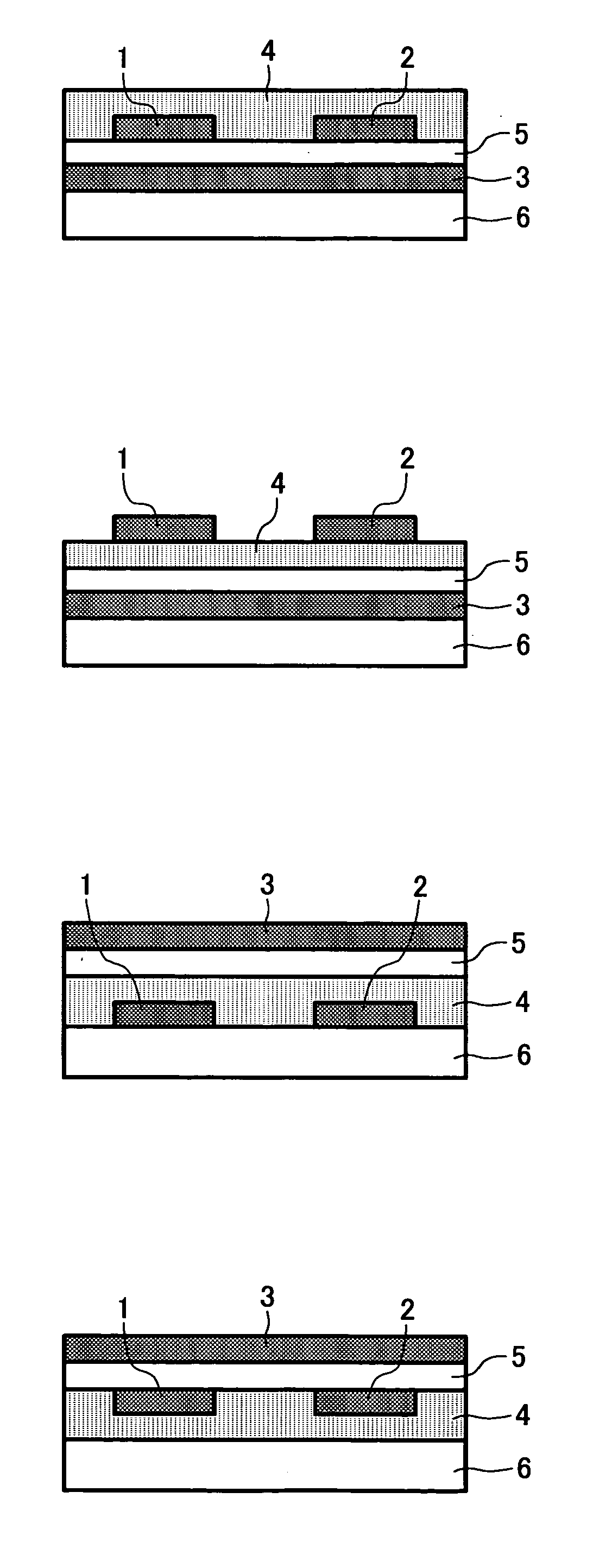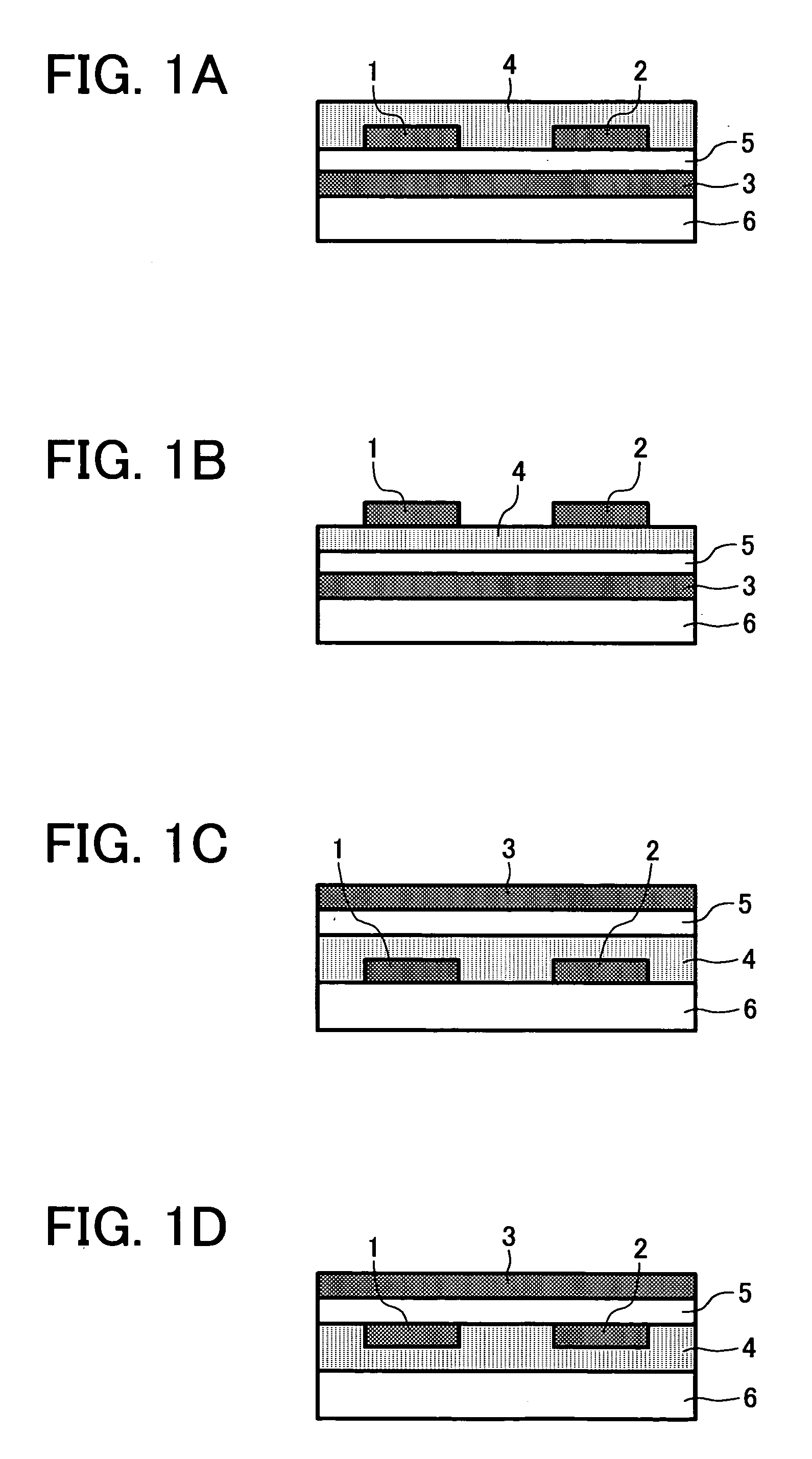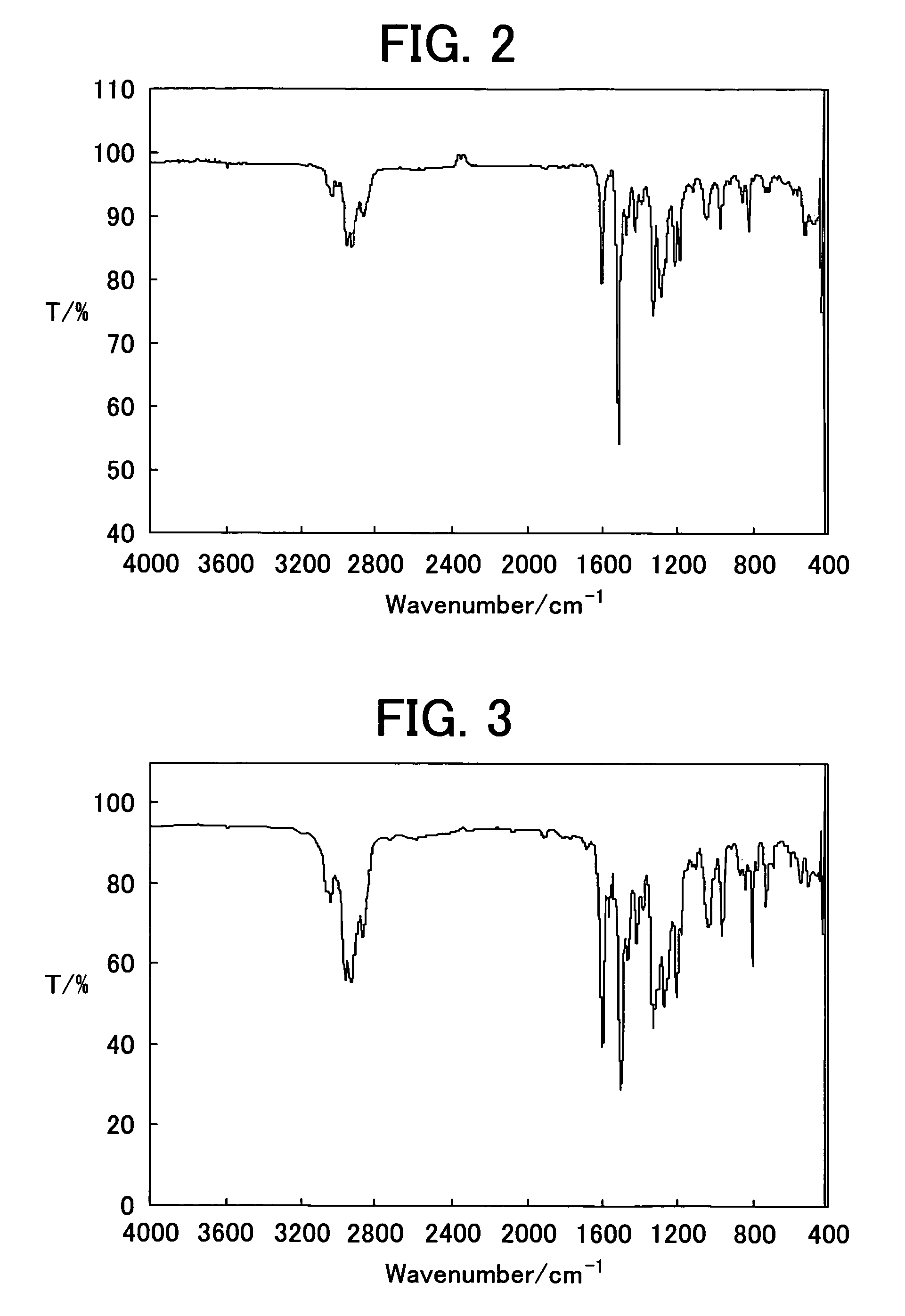Aryl amine polymer, thin film transistor using the aryl amine polymer, and method of manufacturing the thin film transistor
a technology of aryl amine polymer and thin film transistor, which is applied in the field ofaryl amine polymer, can solve the problems of difficult purification of materials, layers have a vital problem with film stability, and the state of layers changes with an extended period of time, and achieves excellent carrier mobility, high on-off ratio, and high preservability.
- Summary
- Abstract
- Description
- Claims
- Application Information
AI Technical Summary
Benefits of technology
Problems solved by technology
Method used
Image
Examples
example 1
[0197]
[0198]A polymer 1 was prepared by: placing 0.852 g (2.70 mmol) of the dialdehyde illustrated above and 1.525 g (2.70 mmol) of the diphosphonate illustrated above in a 100 ml four-neck flask; performing nitrogen gas replacement; adding 75 ml of tetrahydrofuran to the mixture; to the solution, dropping 6.75 ml (6.75 mmol) of a tetrahydrofuran solution of 1.0 mol dm−3 of potassium t-butoxide; stirring the solution for two hours at room temperature; adding diethyl benzylphosphonate and benzaldehyde to the resultant in this order: further stirring for another two hours; adding about 1 ml of acetic acid to the resultant; after finishing the reaction, washing the solution with water; evaporating the solution to eliminate the solvent under reduced pressure; and then reprecipitating the resultant by dissolving the resultant in a tetrahydrofuran and methanol solution for purification thereof. The weight of the thus obtained polymer 1 was 1.07 g and the yield thereof was 73%.
[0199]Elemen...
example 2
[0203]
[0204]A polymer 2 was prepared in the same manner as illustrated in Example 1 using 419.5 mg (1.00 mmol) of the dialdehyde illustrated above and 564.5 mg (1.00 mmol) of the diphosphonate illustrated above. The amount of the thus obtained polymer 2 was 518.3 mg and the yield thereof was 62%.
[0205]Elemental analysis value (theoretical value): C 85.18%; (85.55%), H 8.03%; (7.63%), N 2.10%; (2.08%).
[0206]The Glass transition temperature of the polymer 2 obtained using differential scanning calorimetry (DSC) was 133° C.
[0207]The polystyrene-conversion number average molecular weight and weight average molecular weight measured by gel permeation chromatography (GPC) were 39,200 and 116,000, respectively.
[0208]Infrared absorption spectrum (NaCl cast film) of the polymer 2 is shown in FIG. 3.
example 3
[0209]
[0210]A polymer 3 was prepared in the same manner as illustrated in Example 1 using 1.00 g (2.40 mmol) of the dialdehyde illustrated above and 1.35 g (2.40 mmol) of the diphosphonate illustrated above. The amount of the thus obtained Polymer 3 was 1.32 g and the yield thereof was 82%.
[0211]Elemental analysis value (thoretical value): C 85.33%; (85.55%), H 7.86%; (7.63%), N 2.30%; (2.08%).
[0212]The glass transition temperature of the polymer 3 obtained using differential scanning calorimetry (DSC) was 151.9° C.
[0213]The polystyrene-conversion number average molecular weight and weight average molecular weight measured by gel permeation chromatography (GPC) were 44,400 and 118,000, respectively.
[0214]Infrared absorption spectrum (NaCl cast film) of the polymer 3 is shown in FIG. 4.
PUM
| Property | Measurement | Unit |
|---|---|---|
| surface energy | aaaaa | aaaaa |
| surface roughness | aaaaa | aaaaa |
| temperature | aaaaa | aaaaa |
Abstract
Description
Claims
Application Information
 Login to View More
Login to View More - R&D
- Intellectual Property
- Life Sciences
- Materials
- Tech Scout
- Unparalleled Data Quality
- Higher Quality Content
- 60% Fewer Hallucinations
Browse by: Latest US Patents, China's latest patents, Technical Efficacy Thesaurus, Application Domain, Technology Topic, Popular Technical Reports.
© 2025 PatSnap. All rights reserved.Legal|Privacy policy|Modern Slavery Act Transparency Statement|Sitemap|About US| Contact US: help@patsnap.com



